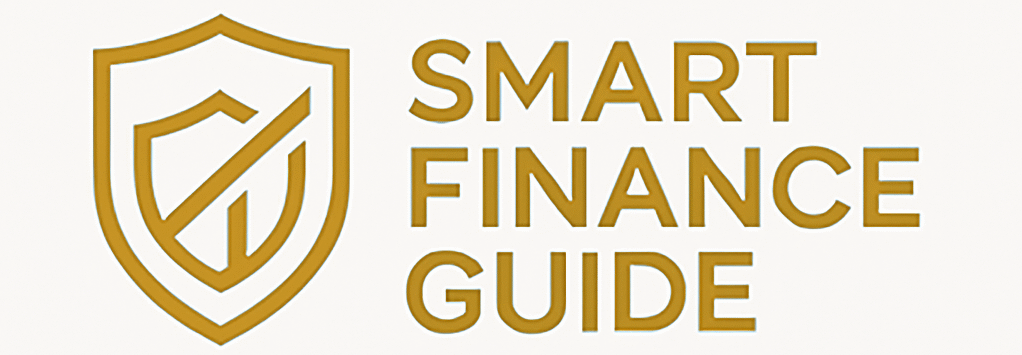The stock market can feel intimidating at first — full of charts, jargon, and numbers that seem designed to confuse you. But the truth is, getting started investing in the stock market is easier than ever, and it can be one of the most powerful tools for building long-term wealth.
In this guide, you’ll learn step-by-step how to get started investing in the stock market as a beginner — from opening your first account to choosing your first investments and avoiding costly mistakes.
Why Invest in the Stock Market?
How to Get Started Investing in the Stock Market. Before learning how to get started investing in the stock market, let’s first understand why it’s worth it.
Benefits of stock market investing:
- Wealth growth through compounding – your money makes money, which then makes more money.
- Beating inflation – stocks historically grow faster than the rising cost of living.
- Dividends – regular payouts from profitable companies.
- Ownership in real businesses – from giants like Apple and Tesla to innovative startups.
- Accessibility – with fractional shares, you can begin with as little as $5.
While the stock market can be volatile in the short term, long-term investing has consistently created wealth for those who stay invested.
Step 1: Understand What the Stock Market Is.
The stock market is a marketplace where shares of public companies are bought and sold. In the U.S., the main stock exchanges are. How to Get Started Investing in the Stock Market:
- New York Stock Exchange (NYSE)
- NASDAQ
When companies go public through an IPO (Initial Public Offering), their shares become available for investors. By buying stocks, you become a part-owner of that company.
Step 2: Set Your Financial Foundation First
Before you start investing, make sure your financial foundation is solid.
✅ Checklist before investing:
- Eliminate high-interest debt like credit cards.
- Build an emergency fund (3–6 months of expenses).
- Be ready to keep money invested for at least 5 years.
This ensures you’re investing from a place of stability instead of financial stress.
Step 3: Open a Brokerage Account
A brokerage account is your entry point to the stock market. It works like a bank account, but for investments.
Popular U.S. brokerage platforms for beginners:
- Fidelity – No fees, robust research tools.
- Charles Schwab – Offers fractional shares and low minimums.
- Robinhood – User-friendly, but be cautious with risky features.
- E*TRADE – Great for more in-depth research.
- SoFi Invest – Ideal for new investors and budgeting.
Look for platforms with $0 commissions, no minimums, and access to ETFs.
Step 4: Learn the Main Types of Investments
When you’re figuring out how to get started investing in the stock market, you’ll see there are different investment vehicles.
1. Stocks (Equities)
- Ownership in a company
- Higher potential returns
- Higher risk
2. ETFs (Exchange-Traded Funds)
- Bundles of stocks in one fund (e.g., S&P 500 ETF)
- Provide instant diversification
- Low fees
Mutual Funds
- Similar to ETFs, but managed actively
- May require higher minimum investments
- Often have higher fees
4. REITs (Real Estate Investment Trusts)
- A way to invest in real estate via the stock market
- Good for passive income
For beginners, ETFs are often the safest and simplest way to start.
See also: 6 Smart Ways to Invest in Property in 2025 Without Owning Real Estate

Step 5: Start With Low-Risk, Diversified Options
How to Get Started Investing in the Stock Market. The smartest way for beginners to get started is by investing in broad-market ETFs.
Great starter ETFs:
- VTI – Total U.S. stock market
- VOO – S&P 500 (top 500 companies)
- VXUS – International exposure
- BND – U.S. bonds for stability
👉 With fractional shares, you can begin with just a few dollars.
Step 6: Decide How Much to Invest
The golden rule: Consistency beats size.
- Start with $25–$100 per week.
- Use Dollar-Cost Averaging (DCA) — invest the same amount regularly.
- Avoid trying to time the market — staying invested long-term almost always wins.
Step 7: Set It and Forget It (Mostly)
Beginners often make the mistake of over-managing their portfolio. Instead:
How to Get Started Investing in the Stock Market. Do this:
- Rebalance every 6–12 months
- Keep adding funds regularly
- Stay focused on your long-term goals
🚫 Avoid this:
- Checking daily
- Panic-selling during downturns
- Chasing “hot stocks” or social media hype
Step 8: Learn As You Go
Investing is not a one-time lesson — it’s a lifelong skill. Start simple, then expand as your knowledge grows. How to Get Started Investing in the Stock Market.
📚 Great beginner resources:
- Investopedia – Easy-to-read definitions.
- The Simple Path to Wealth (JL Collins) – Must-read for new investors.
- Podcasts – BiggerPockets Money, Animal Spirits.
- YouTube – Nate O’Brien, Graham Stephan, Andrei Jikh.
See also: Beginner’s Guide to Investing With Little Money in 2025.
Final Thoughts: How to Get Started Investing in the Stock Market Today
How to Get Started Investing in the Stock Market.
The best time to start investing was yesterday. The second-best time is today.
You don’t need thousands of dollars, a finance degree, or the “perfect” timing. You just need to take the first step.
👉 Open a brokerage account.
👉 Buy your first ETF.
👉 Stay consistent.
Your future self will thank you for learning how to get started investing in the stock market as a beginner — and for taking action now.
FAQ – Getting Started in the U.S. Stock Market for Beginners.
What is the first step to start investing in the stock market?
The first step is to build a strong financial foundation — pay off high-interest debt, set up an emergency fund, and commit to a long-term investing mindset. Then, open a brokerage account with a trusted platform.
How much money do I need to start investing?
You can start with as little as $5–$100 thanks to fractional shares. The key is consistency, not the amount — regular investments over time lead to long-term growth.
What are the best investments for beginners?
Beginners should consider low-cost, diversified ETFs such as VTI (total U.S. market), VOO (S&P 500), or BND (bond market). These offer broad exposure with less risk than individual stocks.
What’s the difference between stocks, ETFs, and mutual funds?
Stocks are single company shares (high risk, high reward).
ETFs are bundles of stocks traded like individual shares (diversified, low-cost).
Mutual funds are similar to ETFs but not traded in real time and may have higher fees.
How often should I check or change my investments?
You don’t need to check your portfolio daily. Rebalancing every 6–12 months is enough. Stay consistent, avoid emotional decisions, and focus on the long term.

